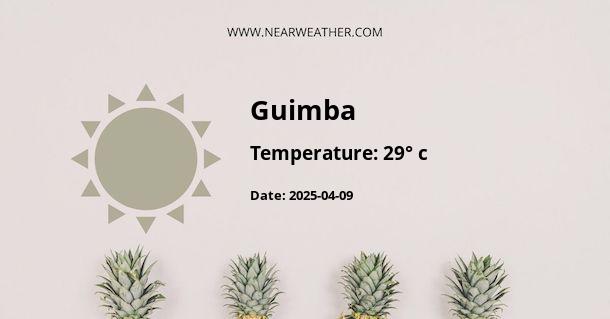Climate and Weather in Guimba, Philippines
Guimba is a municipality located in the province of Nueva Ecija in the Philippines. It is known for its agricultural industry, with vast rice fields and farms stretching across the landscape. The climate in Guimba is classified as tropical monsoon climate, characterized by distinct wet and dry seasons throughout the year. Understanding the weather patterns in Guimba is essential for residents, tourists, and those interested in the region's agricultural activities.
Temperature
The temperature in Guimba remains relatively high throughout the year due to its tropical location. The average annual temperature is around 28 degrees Celsius (82 degrees Fahrenheit), with little variation between seasons. However, there are some fluctuations in temperature between day and night. During the day, temperatures can reach up to 32 degrees Celsius (90 degrees Fahrenheit), while at night, they can drop to around 23 degrees Celsius (73 degrees Fahrenheit).
The hottest months in Guimba are typically from March to May, with temperatures often exceeding 35 degrees Celsius (95 degrees Fahrenheit). It is important to stay hydrated and take necessary precautions during this period to avoid heat-related illnesses. The cooler months are from December to February, with temperatures ranging from 25 to 28 degrees Celsius (77 to 82 degrees Fahrenheit).
Rainfall
Guimba experiences two distinct seasons: the wet season and the dry season. The wet season typically starts in May and lasts until October, while the dry season spans from November to April. During the wet season, Guimba receives a significant amount of rainfall, with the peak occurring from July to September.
The average annual rainfall in Guimba is around 1,800 millimeters (70.9 inches). However, the exact amount can vary from year to year. The wettest months are September and October, with an average rainfall of 300 to 400 millimeters (11.8 to 15.7 inches) per month. During this time, heavy downpours and occasional typhoons can occur, which may cause flooding and disruptions in the region.
On the other hand, the dry season in Guimba is characterized by lower rainfall levels and a decrease in humidity. From November to April, the region experiences significantly less rainfall, with an average of 10 to 20 millimeters (0.4 to 0.8 inches) per month. The driest months are typically February and March.
Humidity
Due to its tropical climate, Guimba experiences high levels of humidity throughout the year. The average relative humidity ranges from 70% to 90%. The highest humidity levels are usually observed during the wet season when the combination of rainfall and warm temperatures creates a humid environment.
Wind Patterns
The wind patterns in Guimba are influenced by the monsoon seasons. During the wet season, the southwest monsoon, locally known as "habagat," prevails, bringing moist air from the ocean. This results in increased cloud cover and rainfall. In contrast, during the dry season, the northeast monsoon, known as "amihan," dominates, bringing drier air from the Asian continent.
The average wind speed in Guimba ranges from 5 to 10 kilometers per hour (3 to 6 miles per hour). However, during typhoons, wind speeds can significantly increase, posing risks to infrastructure and agricultural activities.
Impact on Agriculture
The climate and weather in Guimba play a crucial role in the region's agricultural industry. The abundant rainfall during the wet season provides the necessary water supply for rice cultivation, which is the primary agricultural activity in the area. Farmers rely on the timing and amount of rainfall to determine planting and harvesting schedules.
However, excessive rainfall or prolonged drought can have adverse effects on crops. Flooding during heavy rainfall can lead to crop damage and soil erosion. On the other hand, extended dry periods can result in water scarcity and impact rice production. Farmers in Guimba often employ irrigation techniques to mitigate the effects of unpredictable weather patterns.
Conclusion
Guimba, Philippines, experiences a tropical monsoon climate, characterized by high temperatures, distinct wet and dry seasons, and high humidity levels. The region receives a significant amount of rainfall during the wet season, which contributes to its agricultural activities. Understanding the climate and weather patterns in Guimba is essential for residents, tourists, and those involved in the agricultural sector to plan and adapt accordingly.
A - Guimba's Latitude is 15.660500 & Longitude is 120.768303.
A - Weather in Guimba is 27° today.
A - Climate Conditions in Guimba shows overcast clouds today.
A - Humidity in Guimba is 92% today.
A - Wind speed in Guimba is 15.77 km/h, flowing at 103° wind direction. today.
